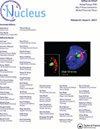AVALIAÇÃO DO DESEMPENHO DE ALGUNS CLONES DE SERINGUEIRA PARA PRODUÇÃO DE MADEIRA
IF 4.5
3区 生物学
Q3 CELL BIOLOGY
引用次数: 0
Abstract
The rubber tree was originally introduced in the State of São Paulo, Brazil, with a view to exploiting natural latex as the main source of income. However, there are some alternatives that may be viable for properties looking to diversify agricultural production. In some Asian countries, timber extraction, seed production for vegetable oil extraction and honey production have been commercially exploited. The exploration of wood has been the most important alternative, extracted when the productive period of the trees ends (25 - 30 years). Rubber tree wood can be used in the furniture industry and in the manufacture of doors, windows and other household items. At the end of their productive life, when it is necessary to replant the area, as the exploitation of latex is no longer viable, the trees have a circumference of 100 - 110 cm (at 125 cm above the ground), being suitable for cutting approximately 300 to 400 trees/ha, with a production of 1 m3 of wood/tree. However, there are some peculiarities in rubber tree wood that should be known. The main objective of this work was to evaluate the wood productive potential of rubber tree clones, as well as the relationship between the rootstocks and the clones in characteristics such as total height, marketable height, DBH (diameter at breast height) and marketable volume of wood. The experiment was carried out at APTA Regional in Pindorama, State of São Paulo, Brazil and the experimental design used was randomized blocks with split plots, with 6 treatments (rootstocks), 6 subtreatments (clones), four replications and 20 plants/plot, with 6 plants useful. The results show that the clone PB 235 is the best for the characteristic total height and commercial height and that the rootstocks RRIM 701, GT-1, PB235 and IAN 873 are the best for the characteristic total height. There was interaction between the different clones and rootstocks tested in terms of total height. Clones PB 235, RRIM 600 and PR 107 are the best for the DAP trait. The rootstocks PB 235, GT-1, IAN 873 and RRIM 701 are the best for the DAP characteristic. Keywords: Hevea brasiliensis. Diameter. Height.一些橡胶树无性系用于木材生产的性能评价
橡胶树最初是在巴西圣保罗州引进的,目的是利用天然乳胶作为主要的收入来源。然而,对于希望实现农业生产多样化的物业来说,有一些替代方案可能是可行的。在一些亚洲国家,木材提取、植物油提取和蜂蜜生产的种子生产已被商业化开发。木材的开采一直是最重要的替代方法,当树木的生产周期结束时(25 - 30年)提取木材。橡胶树木材可用于家具工业和制造门、窗和其他家居用品。在其生产寿命结束时,当需要重新种植该地区时,由于乳胶的开发不再可行,树木的周长为100 - 110厘米(距地面125厘米),适合砍伐约300至400棵树/公顷,每棵树的木材产量为1立方米。然而,橡胶树的木材有一些特性是应该知道的。本研究的主要目的是评价橡胶树无性系的木材生产潜力,以及砧木与无性系在总高度、可销售高度、胸径和木材可销售体积等性状上的关系。试验在巴西圣保罗州Pindorama的APTA区域进行,试验设计为随机区,分地块,6个处理(砧木),6个亚处理(无性系),4个重复,20株/地块,6株有用。结果表明,无性系PB235的特征总高和商品高最好,砧木RRIM 701、GT-1、PB235和IAN 873的特征总高最好。不同无性系与砧木在总高方面存在互作关系。无性系PB 235、RRIM 600和PR 107最适合DAP性状。砧木PB 235、GT-1、IAN 873和RRIM 701的DAP特性最好。关键词:巴西橡胶树;直径。高度。
本文章由计算机程序翻译,如有差异,请以英文原文为准。
求助全文
约1分钟内获得全文
求助全文
来源期刊

Nucleus
CELL BIOLOGY-
CiteScore
5.60
自引率
5.40%
发文量
16
审稿时长
13 weeks
期刊介绍:
Nucleus is a fully open access peer-reviewed journal. All articles will (if accepted) be available for anyone to read anywhere, at any time immediately on publication.
Aims & Scope: The eukaryotic cell nucleus is more than a storage organelle for genomic DNA. It is involved in critical steps of cell signaling and gene regulation, as well as the maintenance of genome stability, including DNA replication and DNA damage repair. These activities heavily depend on the spatial and temporal “functional” organization of the nucleus and its integration into the complex meshwork of cellular scaffolding.
Nucleus provides a platform for presenting and discussing cutting-edge research on all aspects of biology of the cell nucleus. It brings together a multidisciplinary community of scientists working in the areas of:
• Nuclear structure and dynamics
• Subnuclear organelles
• Chromatin organization
• Nuclear transport
• DNA replication and DNA damage repair
• Gene expression and RNA processing
• Nucleus in signaling and development
Nucleus offers a variety of paper formats including:
• Original Research articles
• Short Reports
• Reviews
• Commentaries
• Extra Views
• Methods manuscripts.
 求助内容:
求助内容: 应助结果提醒方式:
应助结果提醒方式:


